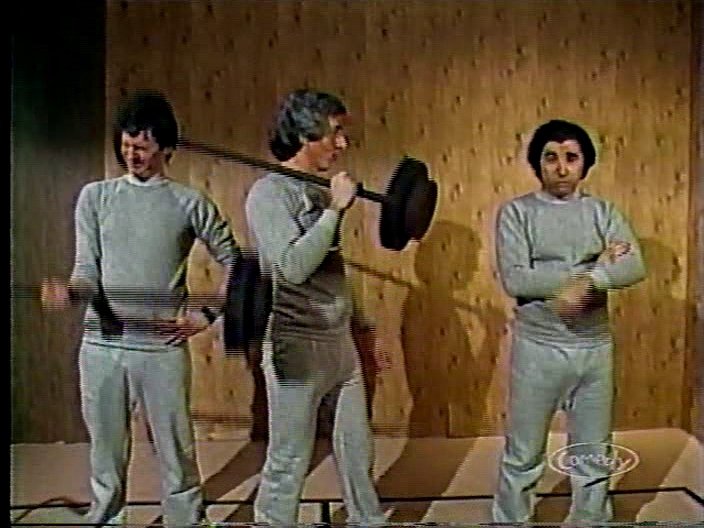
Existentialist Weightlifting
Classic SNL Review: February 16, 1985: Pamela Sue Martin / The Power Station (S10E14)
Sketches include “The Joe Franklin Show”, “That White Guy & His Wife”, “Night of 100 Stars”, “Plexiglass Stand-up”, “Called Shot”, “Do You Know What I Hate (V)”, “First Draft Theatre”, “Dynasty’s Greatest Fights”, “Tom, Dick, & Horny”, and “Shootout at the Zepplin Chorale”. The Power Station performs “Some Like It Hot” and “Get It On (Bang A Gong)”.
Classic SNL Review: October 13, 1984: Bob Uecker / Peter Wolf (S10E02)
Sketches include "Password", "Snap, Crackle & Pop", "An American Portrait", "Little League Trade", "Brokaw's Complaint", "The Mamie Eisenhower Center for the Dull", "7x4", "Ballplayers", "Lost & Found", "Tippi Turtle", "SNL Mailbag", "Fresh Squeezed", and "NBC Sports Update". Peter Wolf and the House of Hits All-Stars perform "Lights Out" and "I Need You Tonight".
Classic SNL Review: April 7, 1984: Michael Douglas / Deniece Williams (S09E16)
Sketches include "Lost Script", "MTV News (two parts)", "Foldger's Crystals", "Price Waterhouse", "4 Minutes To Live", "Audition", "Footless", "Soundtrack", "TV's Foul-Ups, Bleeps, Blunders, Bloopers, Practical Jokes and Political Debates", and "Sugar or Plain". Deniece Williams performs "Let's Hear It For The Boy" and "Wrapped Up".
SNL Up Close: 1982-83
Dick Ebersol brought Saturday Night Live back from the brink of cancellation.His first full season of SNL had its share of volatility, particularly with Michael O'Donoghue's mid-season firing, but the show stablized by the end of the season.For the next season, Ebersol and producer Bob Tischler retreated a bit from the calculated risks the show took in 1981-82: Don Pardo was back in the announcer's booth, the "live from New York" phrase opened some (but not all) of the shows this year, and hosts once again got monologue segments following the opening montage. Like with 1980-81, and 1981-82, I will be doing sketch-by-sketch reviews of the episodes this season.If anyone has information to contribute about the episodes, such as who wrote what, writer cameos, etc., I welcome it and will acknowledge my source in the sketch review.


